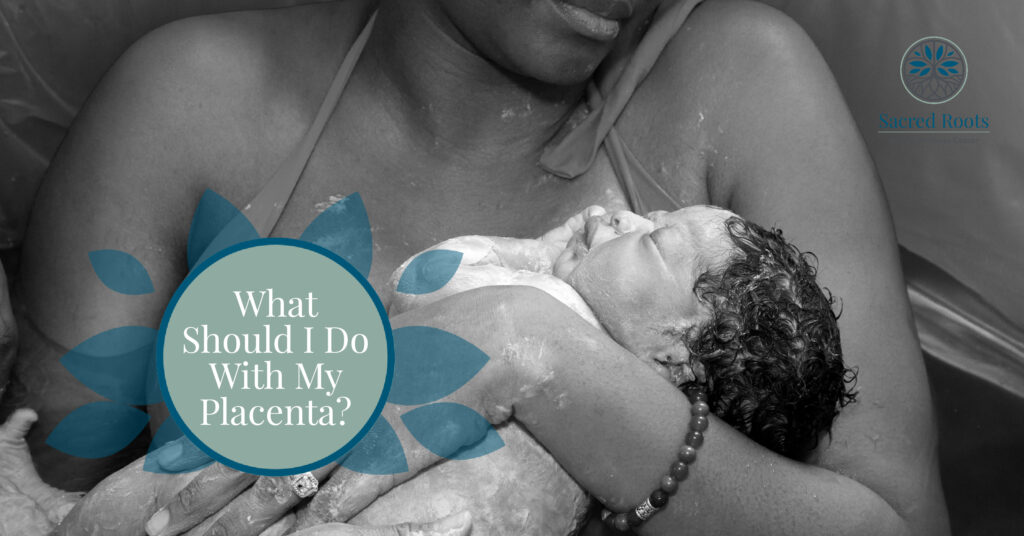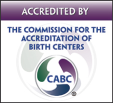What Should I Do With My Placenta?
The tree of life. The link between worlds. The placenta is a glandular organ that develops from the fertilized egg. It plays many roles throughout pregnancy, birth, and breastfeeding. Your placenta is in charge of bringing oxygen and nutrients to your baby, removing waste from your baby’s blood, and producing hormones to support pregnancy and breastfeeding. It guides your body in adjusting to the extra blood volume that you have while you are pregnant. Many cultures have practices and beliefs about the placenta and how to dispose of it after birth. Some of those practices have gained popularity in the United States among the birthing community. You may not have thought about doing anything with your placenta! However, if you find yourself intrigued by the idea of honoring or preserving your placenta in some way, we have put together a list of different practices that are used today.
The following are some examples of practices pertaining to the placenta. This is not intended to be used as medical advice. Please discuss any questions with your provider.
Placenta encapsulation is the process of dehydrating, powdering, and encapsulating the placenta and ingesting the pills during the postpartum period. This is usually performed by a skilled doula who specializes in placenta encapsulation. The intention of this practice is to supplement your body with iron and hormones from the placenta to aid in recovery. Potential benefits include a decrease in postpartum mood disorders, restoration of iron stores, and increased oxytocin and milk supply. It is important to note that there is not yet evidence to support the benefits of placenta encapsulation and there may be a risk of ingesting harmful bacteria. After birth, the placenta is considered dead tissue and is susceptible to harboring bacteria if not processed properly. If you are considering this option, look for doulas in your area who specialize in this and can perform it safely to minimize the risk of infection and harmful bacteria ingestion. Let your midwife know before birth that you intend to do this, so that the placenta may be handled with care and placed into a cooler as soon as possible. You will likely have to supply your own cooler. Think of your placenta as raw meat and handle it as such. The encapsulation should take place as soon as possible to prevent the growth of bacteria.
Placenta art: If you are not comfortable with the idea of ingesting your placenta but you still want to have a memento, you could consider placenta art. There are many options for memorializing your placenta. This could include photography, placenta prints on canvas using blood, paint, or ink, or drying of a piece of the placenta to keep.
Lotus birth is the practice of leaving the placenta attached to your baby until the umbilical cord falls off naturally- a process that usually takes 1-2 weeks. Practitioners of lotus birth report that it is a gentler transition of baby from womb to world. Possible benefits include increased delivery of blood from placenta to baby, increased healing of the umbilicus, and better postpartum healing from the birthing parent, as they are forced to move slowly and intentionally with the placenta by babyś side. The benefits of lotus birth are not supported by research at this time, and many health organizations do not recommend it. There is a risk of infection associated with lotus birth. Once the placenta is born, it becomes dead tissue filled with blood, which, as it decomposes, can harbor harmful bacteria. There is also the risk of injury to the baby if the cord is accidentally pulled off of the baby’s body. If you are considering a lotus birth, discuss it with your provider and determine a plan to minimize risks to your baby. Consider what kind of a container to have to transport the placenta near your infant for up to 2 weeks to prevent pulling on their umbilical cord. The container will need to be cleaned regularly to prevent bacterial growth. The placenta should never be placed on ice, but instead allowed to dry out. Some doulas may have expertise in lotus birth and have knowledge about herbs and salts that can encourage this process.
Burial. Many cultures throughout the world have practices involving burial of the placenta and marking the burial spot with art or trees. As the placenta decomposes and the tree grows root, the nutrients from the placenta will feed the tree. If you choose this option, make sure it is buried deep enough that animals are unable to smell it and dig it up. A placenta is considered human tissue. If you are burying it, make sure it is buried beneath the tree you are planting and ensure that there is soil between the placenta and plant so that the placenta may decompose before the roots reach it.
Cord blood banking is the practice of saving the blood in the umbilical cord as a way to treat future illnesses, should your baby develop them. The medical uses of stem cells are rapidly expanding. It can be used to treat certain cancers, immune system disorders, bone marrow failure, tumors, and some metabolic disorders. The cord blood may also be used in circumstances for siblings or parents. Cord blood banking can be expensive. Most companies require that you pay an initial fee, as well as yearly storage fees. The downside to this practice is that removing cord blood means that it is taken away from your baby. With delayed cord clamping, that blood remaining in the placenta and umbilical cord at birth can be pumped back into babyś body to support oxygenation and increase iron stores.
You may be content with seeing your placenta at birth and then allowing your provider to dispose of it, and that is ok! You grew an entirely new organ, your babyś first womb-mate. Be proud of that. It is no small feat. If you are considering any of these options, let your midwife know and discuss a plan to do them as safely as possible or contact us if you have any questions.
Evidence on Placenta Encapsulation
https://evidencebasedbirth.com/evidence-on-placenta-encapsulation/
Lotus Birth
https://www.mamanatural.com/lotus-birth/



